Introduction to GeoSpatial streaming with Apache Spark and Apache Sedona
We are producing more and more geospatial data these days. Many companies struggle to analyze and process such data, and a lot of this data comes…
Read moreThis blog post is based on a webinar:”Real-Time Data to Drive Business Growth and Innovation in 2024” that was held by CTO Krzysztof Zarzycki at GetInData | Part of Xebia.
In the fast-paced world of data streaming, real-time processing has become a cornerstone of modern business operations. As we navigate through the digital landscape, the demand for instant service responses and actionable insights has never been higher. Companies that harness the power of real-time data gain a competitive edge, enabling them to innovate, serve customers better and streamline operations efficiently. The shift from traditional batch processing to real-time handling of data is no longer just a technical upgrade – it's a business necessity in today's data-driven world.
Based on a survey by Confluent, over 72% of IT and engineering leaders are now using data streaming for critical operations, highlighting its growing importance. Almost half of them - 44% have identified data streaming as a top strategic priority for 2024. What about the financial impact? Businesses are seeing, or expecting to see, returns on their data streaming investments of 2 to 5 times. That means that companies see the potential that data streaming brings to the table. But what is real-time data processing? This practice, also known as data streaming, refers to capturing and utilizing information from vast streams of data, as it flows and almost as soon as it is generated. This includes recording live events such as transactions, customer interactions or changes in internal systems, all of which can provide immediate and actionable insights. The sources of real-time data are diverse, ranging from user interactions with the business in the digital space to IoT logs, location data, social media, market trends and more.
One of the key drivers of real-time data processing is the concept of the half-life of data. Data loses its value over time, and the longer we delay analyzing or acting on it, the less impactful it becomes. While data holds long-term value for informing strategic decisions, operational ones require analyzing data and acting on this immediately. Analyzing real-time data allows companies to capitalize on the most recent and valuable insights, enabling them to optimize day-to-day operations, like interacting with their customers instantly, managing the inventory effectively, adjusting pricing dynamically, and detecting and preventing threats in real time. The ability to act swiftly on operational data can lead to significant improvements in decision-making, business performance and operational efficiency.
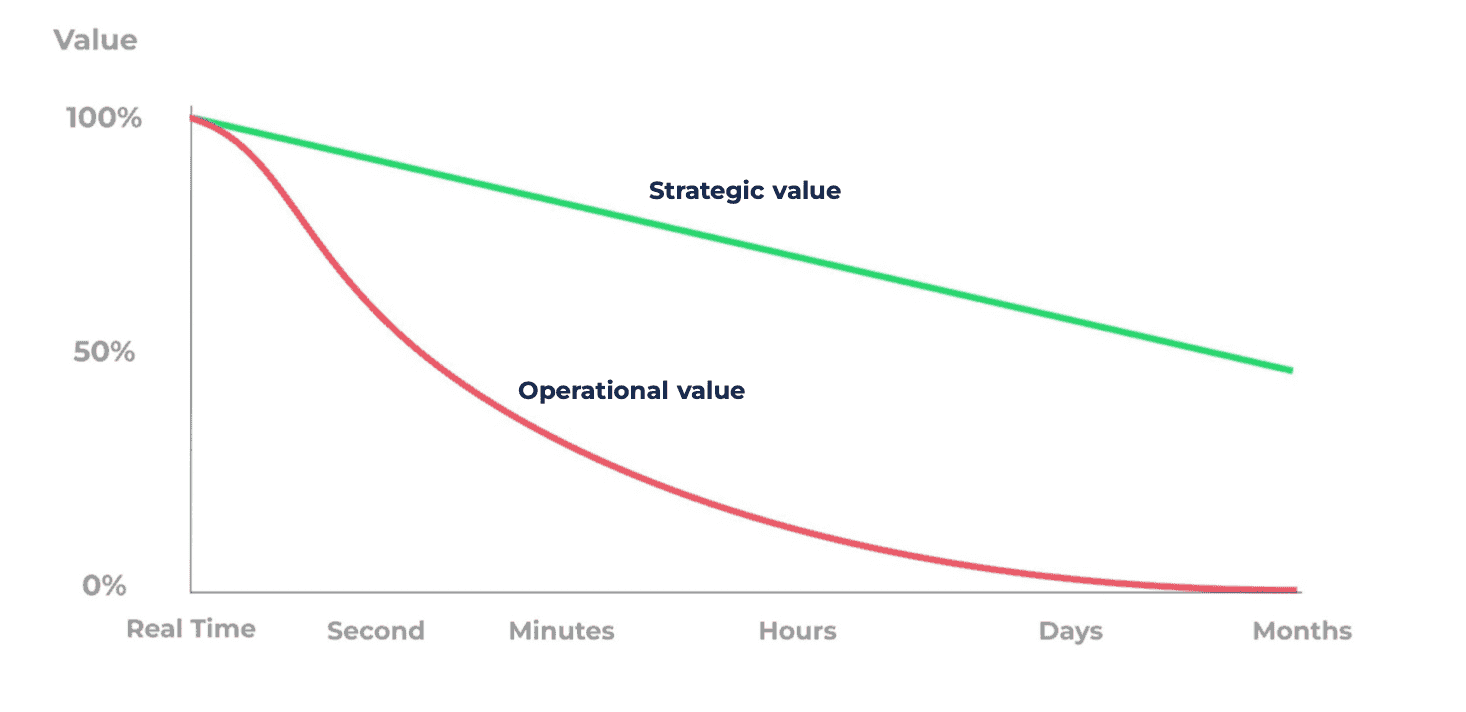
One of the key advantages of real-time data processing is its impact on customer experiences. From providing personalized notifications and recommendations to detecting and preventing fraud in real time, businesses can deliver hyper-personalized services that meet customer expectations. Real-time data enables companies to adapt to customers' current preferences and behaviors, leading to enhanced customer service, targeted marketing strategies and more efficient operations. By leveraging AI and real-time data together, companies can offer new services and features that were previously impossible on a digital scale. If you want to read more about real-time context and persona, read the blog post.
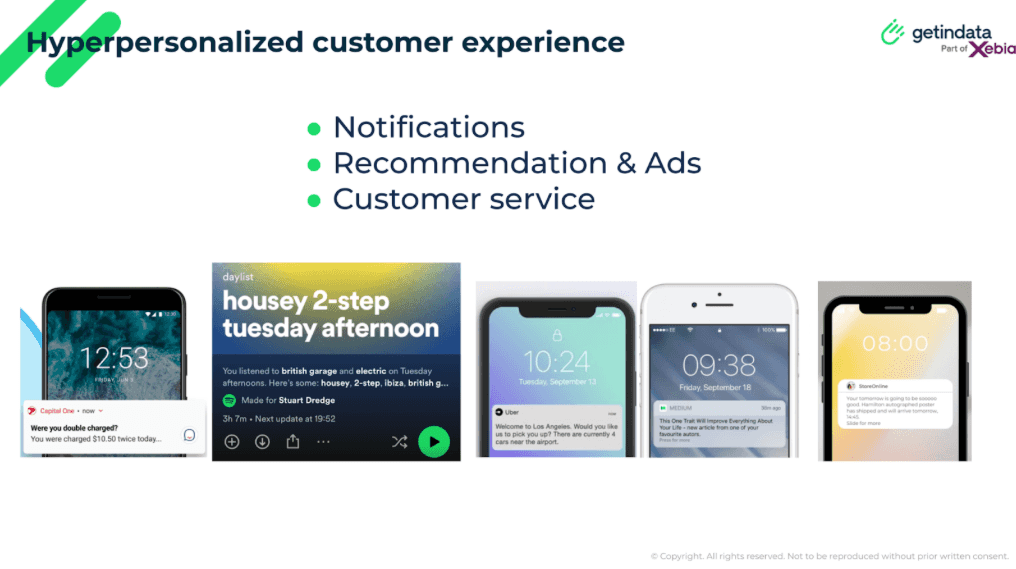
Another area where real-time data processing plays a crucial role is operational business intelligence. While traditional business intelligence focuses on long-term trends and strategic decision-making, operational BI aims to optimize day-to-day operations through immediate and actionable insights. Companies can use real-time analytics to adjust inventory levels, optimize pricing strategies, detect service disruptions, or provide external users with real-time insights on their performance. By implementing operational intelligence, organizations can drive operational efficiency, improve customer service and stay agile in a fast-paced business environment.
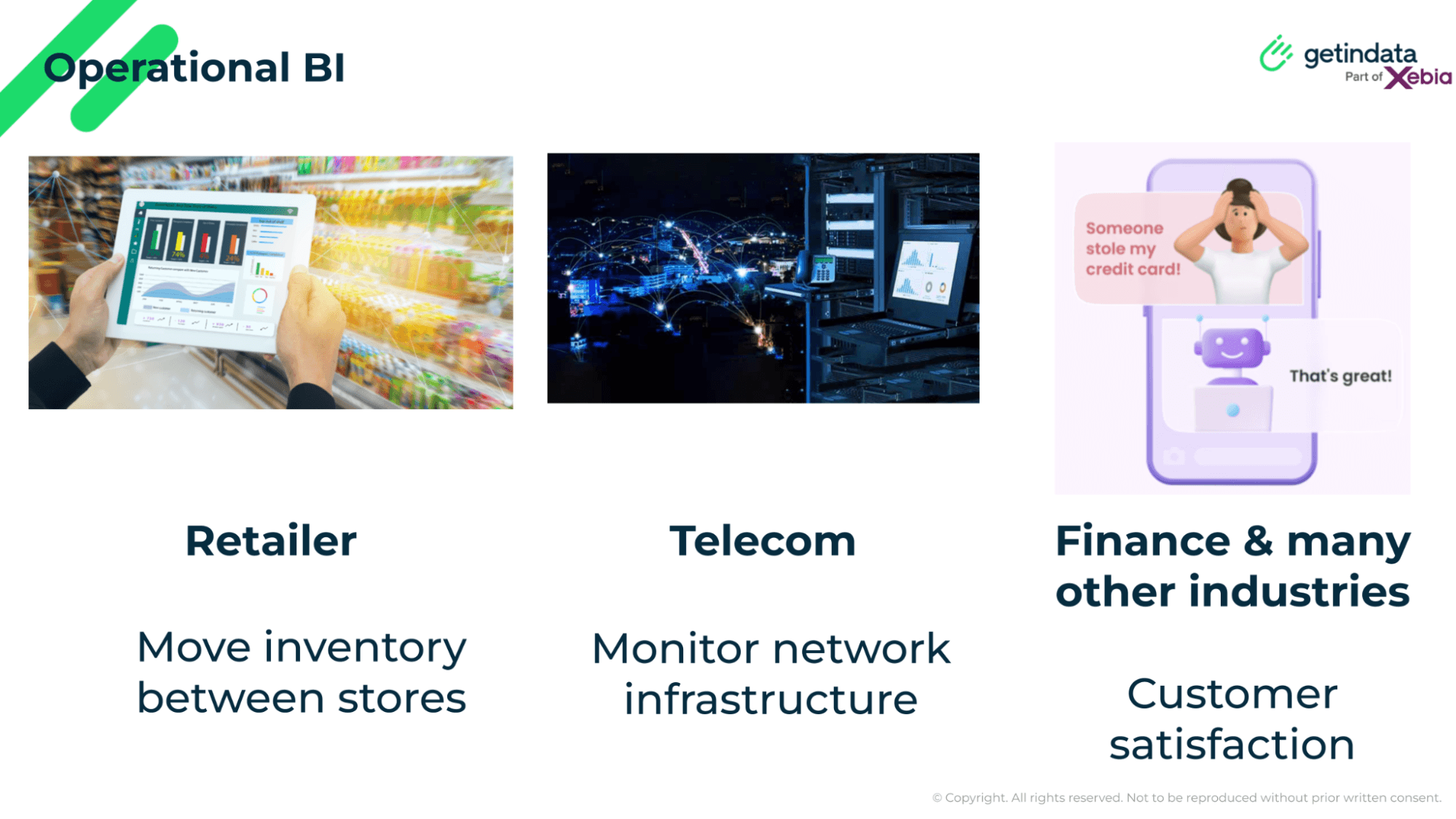
Real-time data streaming has revolutionized numerous industries, leveraging operational intelligence and enhancing user experiences with remarkable efficiency. For instance, in the telecom sector, real-time BI swiftly detects service disruptions, enabling technical teams to address issues within an impressive timeframe. This has significantly bolstered telecom network reliability. Furthermore, in e-commerce, platforms like Allegro and Shopify provide real-time insights into the platform users’ sales performance, catering to vast amounts of concurrent users worldwide. Additionally, e-commerce analytics providers, such as Dema AI, deliver personalized analytics for their clients, ensuring real-time profitability insights for products, marketing campaigns and customers. The impact is profound; dynamic pricing strategies, enabled by real-time analytics have increased vendor profits by up to 25%, as evidenced by Amazon's success. Moreover, in the financial sector, real-time data algorithms have been instrumental in detecting and preventing fraud, with over 90% of fraudulent cases being identified in one of the European Banks we work with. Another one boasts savings of over $150 per customer per year on average thanks to their robust fraud detection solutions. These examples underscore the transformative power of real-time data streaming, showcasing its pivotal role in driving business success and safeguarding against threats in today's dynamic digital landscape.
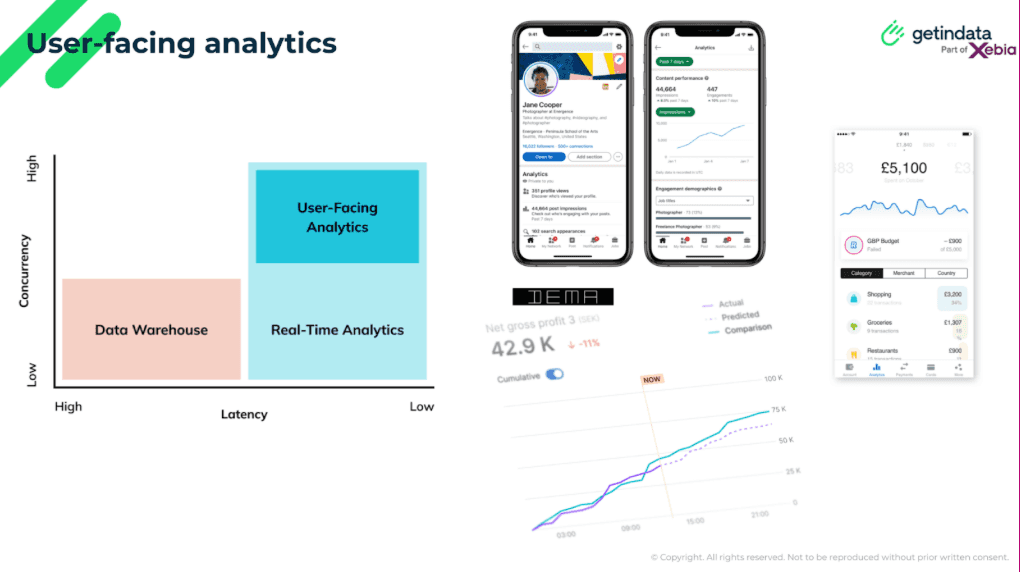
Many of you may still think that data streaming is reserved for big tech companies investing millions in engineering brain power, but this is not exactly true, because our technological world has learned how to handle real time data. Now, thanks to these advancements in technology, the evolution of cloud computing and big data technologies, we have gained access to tools that make processing and analyzing those vast streams of data in real time more accessible and feasible for a wider range of businesses. A modern data streaming architecture comprises of several components, from streams ingestion and storage, to stream processor and real-time analytics store, each playing a crucial role in handling high-velocity data streams. Key characteristics include scalability, reliability, versatility and low latency. Technologies such as Apache Kafka, Apache Flink and real-time analytics stores like Clickhouse enable companies to capture, process and analyze vast streams of data in real time. If you want to learn more about this, feel free to watch a webinar on-demand “Real-time data to Drive Business Growth and Innovation in 2024”.
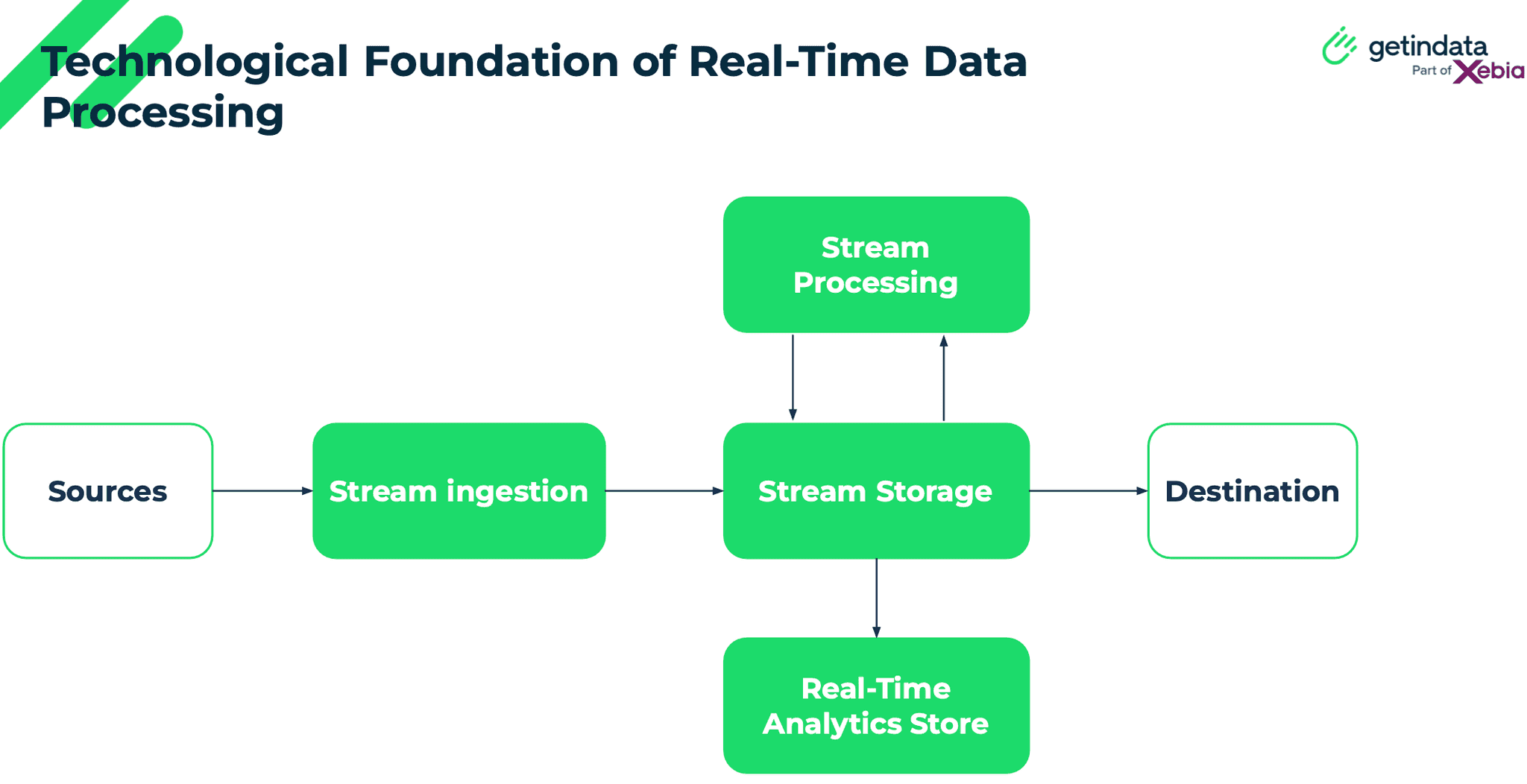
As the world of real-time data processing continues to evolve, companies are increasingly turning to cloud-managed services and simplified technologies to implement real-time capabilities cost-effectively. With the availability of tools that provide data lineage, observability and quality on data streams, the focus on ensuring data integrity and reliability in real-time processing is paramount. The future of real-time data processing holds immense potential for innovation, efficiency and competitiveness in the ever-changing business landscape. By embracing real-time data processing technologies and platforms, companies can unlock new opportunities, improve decision-making and stay ahead of the curve in the data-driven era.
Would you like to know more about streaming data analytics or real-time AI? If you would like to discuss this or any other topics, feel free to sign up for a free consultation with our experts.
We are producing more and more geospatial data these days. Many companies struggle to analyze and process such data, and a lot of this data comes…
Read moreWhen you search thought the net looking for methods of running Apache Spark on AWS infrastructure you are most likely to be redirected to the…
Read moreLLM-enhanced information retrieval Over the last few months, Large Language Models have gained a lot of traction. Companies and developers were trying…
Read moreYou just finished the Apache Spark-based application. You ran so many times, you just know the app works exactly as expected: it loads the input…
Read moreData processing in real-time has become crucial for businesses, and Apache Flink, with its powerful stream processing capabilities, is at the…
Read moreWe are proud to present you our first e-book, created by GetInData specialists. Apache NiFi: A Complete Guide is the result of long and fruitful work…
Read moreTogether, we will select the best Big Data solutions for your organization and build a project that will have a real impact on your organization.
What did you find most impressive about GetInData?